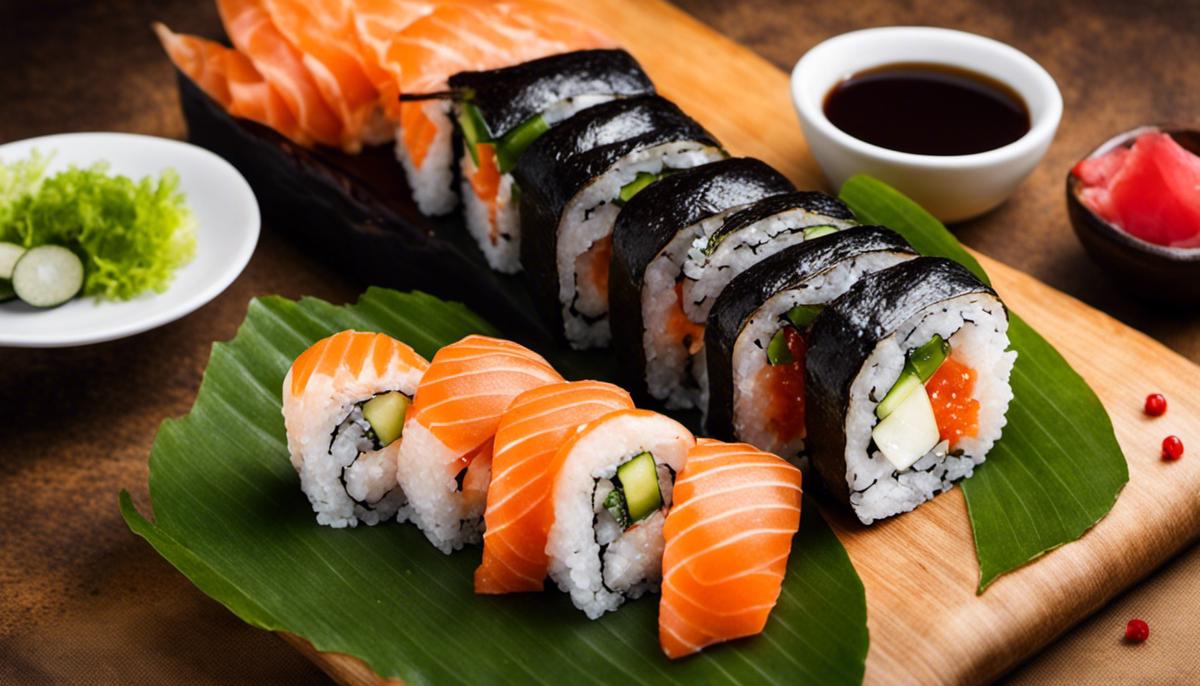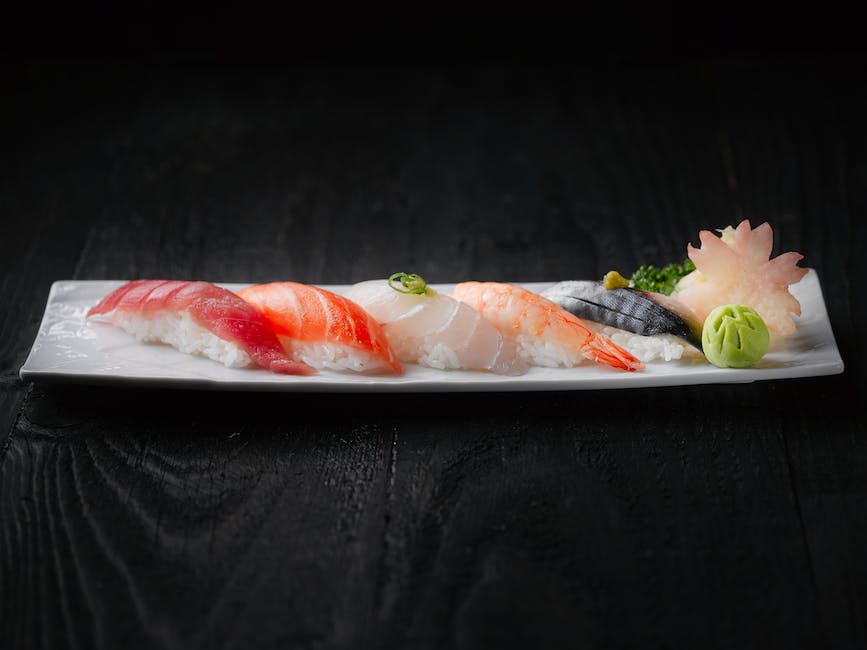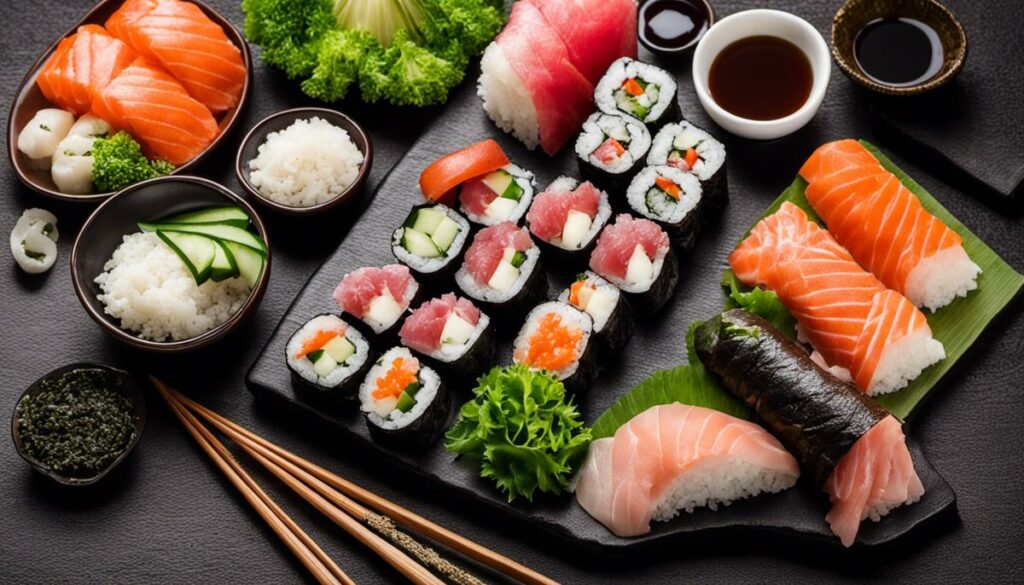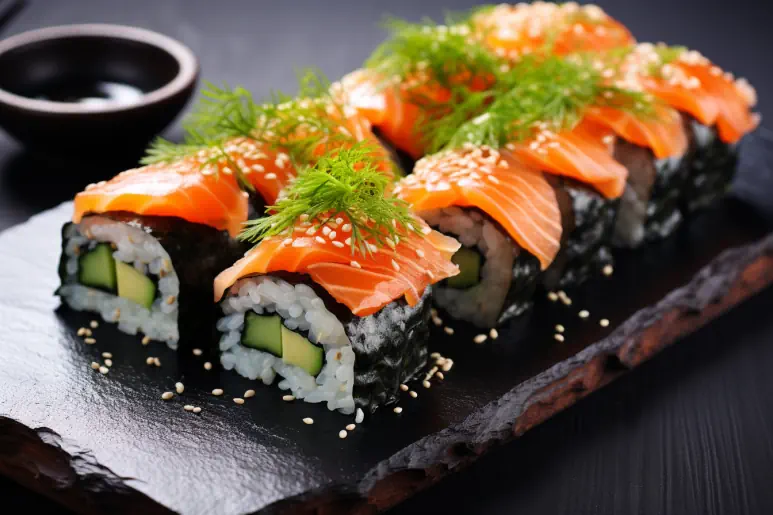In addition to being delicious, sushi is an edible form of art that is admired by many. It is a centuries-old Japanese tradition that requires persistent discipline and a high level of creativity. Many of us enjoy eating sushi, but it takes true passion and dedication to make it ourselves. In this article, we’ll focus on maki sushi and show step-by-step how you too can develop a skillful hand in “Maki Sushi for Beginners: Easy, Fast, and Delicious.” We will talk about the preparation of the ingredients, show you the correct use of the sushi mat and introduce you to the art of sushi rolling.
Preparation of ingredients
Title: How to Prepare the Ingredients for Maki Sushi: A Foodie’s Guide
Making maki sushi at home is an intimidating task for many, and yet it is a sensual journey for any foodie looking forward to new flavor creations. It’s a tasty way to enjoy the culinary play with flavors, textures, and techniques that are deeply rooted in Japanese culture.
An essential part of sushi preparation is the preparation of the ingredients. In fact, this is a crucial process, as the quality of the ingredients directly affects the taste and texture of the finished sushi. So, let’s learn how to prepare the ingredients for maki sushi.
First, the rice. Choosing the right rice is key. The ideal rice for sushi is the short-grain rice, which is sticky after preparation but fluffy enough so that the individual grains can be felt. Wash the rice in cold water several times until the water flows clear to remove loose starch.
Next, the filling. Typical ingredients are raw fish, cooked seafood, vegetables or pickled vegetables. While the fish should be thinly sliced and boneless for the filling, the vegetables must be cut into thin strips. When it comes to maki sushi, the flavor combinations can be endless, so feel free to be creative!
The seaweed leaf, known as nori, is also an important ingredient in maki sushi. Be careful not to let the nori get damp or it will tear or become too soft. Always store it in a sealed container to protect it from moisture.
Finally, it should be mentioned that one of the pillars of sushi preparation is cleanliness. All ingredients must be fresh and of high quality. Afterwards, all surfaces on which you prepare the sushi ingredients should be thoroughly cleaned.
Ingredients prepared with care and attention to detail, coupled with a touch of creativity, are the secret to a successful maki sushi experience at home. The introduction to the world of sushi preparation not only prepares us for a delicious dish, but also brings us a little closer to the fascinating world of Japanese cuisine and culture. It is a journey that enriches the imagination and the palate in equal measure. Enjoy your meal!

Correct technique for the sushi mat
The use of the sushi mat
When you’re done preparing it and all the ingredients are within reach, the crucial part comes: constructing the maki sushi with the help of a sushi mat. Also known as Makisu, this particular mat is usually made of bamboo and plays a crucial role in rolling sushi.
Sushi mats are flexible yet sturdy enough to support the rice and filling as it rolls. They also give the maki sushi rolls their characteristic, compact shape. Proper handling of the sushi mat is of great importance to make authentic maki sushi.
First, place a piece of nori on the sushi mat. Make sure that the rough side of the nori is on top. Now top the bottom half of the nori with the prepared sushi rice. Leave a margin of about two centimeters at the bottom.
The prepared filling ingredients are now placed on top of the rice. It is important not to overload the filling, otherwise it will be difficult to roll and the ingredients could fall out.
Now comes the “magical” part of the process: rolling the maki sushi with the sushi mat. Hold the filling with your fingers while gripping the bottom edge of the sushi mat with your palms. Gently but firmly roll the mat to form the beginning of the sushi roll. Apply even pressure to create a textured and solid sushi roll.
Gently unfold the sushi mat to check the progress of the roll before fully rolling it up. Once the rolling process is complete, the sushi roll should be firm, but not bruised, and have an even shape.
It is always good to clean the sushi mat thoroughly after each use. A hygienic way of working is crucial not only in the art of sushi rolling, but in all areas of cooking.
Sushi rolling is undoubtedly an art form. It requires practice, precision and, of course, the right tools – especially a good sushi mat. And as with any carefully prepared meal – from baking bread to grilling – it’s the end result that counts: a piece of culinary delight waiting to be enjoyed. Good sushi not only brings people together, but also a culture based on respect for ingredients and craftsmanship. Happy sushi rolling!

Art of sushi rolling
Of course, rolling maki sushi isn’t as easy as it sounds, but that’s what makes it so appealing! The key to successfully rolling maki sushi lies in the right technique and the perfect accessories: the sushi mat.
Made of bamboo sticks, the sushi mat is an indispensable utensil for every maki sushi lover. It is used to evenly distribute the rice and the rest of the ingredients and to shape the nori.
The preparation of the sushi mat begins with laying out the nori: it is placed with the shiny side down. This is followed by the sushi rice, which is evenly distributed over the nori. You should make sure that the top and bottom of the nori are free of rice to ensure a clean cut.
Now comes the most exciting part: putting on the filling. The selected ingredients are placed along the center of the rice and gently pressed into it with your fingertips.
Ready to roll? That’s where the sushi mat comes in. Grasp the mat with both hands and roll up the nori tightly together with the rice and filling. You should make sure that the roll is firm, but not too tight.
The hygiene of the sushi mat must never be neglected. After each rolling, the mat should be thoroughly rinsed with warm water and air-dried. This contributes to the longevity of the accessories and prevents cross-contamination.
In conclusion, rolling maki sushi is both a science and an art. The respect for every single ingredient, the right technique and the right tools make the Maki-Sushi rolls a true culinary pleasure. In the spirit of Japanese cuisine, it’s less about getting full and more about celebrating the process and the final product. Enjoy your meal!

Making your own maki sushi can be challenging at first. But with practice and patience, you’ll find that it’s not as complicated as it seems. Once you get the hang of it, you’ll discover that making maki sushi is also a wonderful way to unleash your creativity. Experience and experimentation are keys to mastering the art of maki sushi. We hope this guide will help you become a better sushi chef and enjoy the enriching and fulfilling experience of sushi making!


